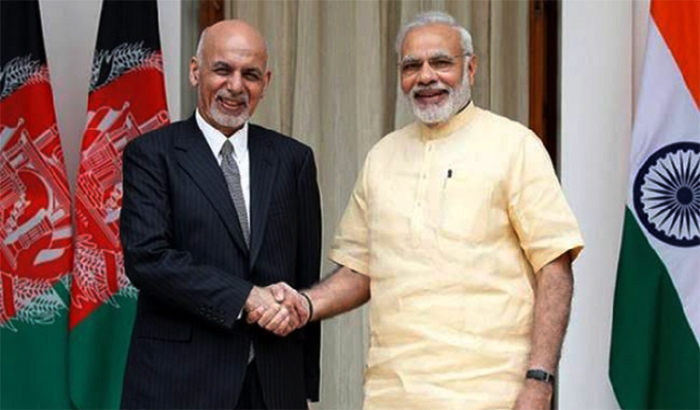New Delhi, Aug 11: M Venkaiah Naidu was on Friday sworn in as the Vice President of India.
President Ramnath Kovind administered the oath of office to Naidu, 68, at a brief ceremony in the Durbar Hall of Rashtrapati Bhawan attended by political leaders cutting across party lines.
Wearing his trademark white panche (lungi) and white shirt, Naidu took oath in Hindi in the name of god.
While he is the 15th Vice President, he is the 13th person to hold the constitutional post. His predecessor Hamid Ansari and the first Vice President S Radhakrishnan had held the post for two consecutive terms.
Prime Minister Narendra Modi, former Vice President Ansari, Lok Sabha Speaker Sumitra Mahajan, former Prime Minister Manmohan Singh, leader of the opposition in the Rajya Sabha Ghulam Nabi Azad, BJP veteran L K Advani, several Union ministers, governors and chief ministers attended the ceremony.
SP leader Mulayam Singh Yadav, NCP's Tariq Anwar, CPI leader D Raja, TMC leaders Sudip Bandhopadhyay and Derek O' Brien and AIADMK's O Panneerselvam were also seen.
Delhi chief minister Arvind Kejriwal and his Bihar counterpart Nitish Kumar — who has joined hands with the BJP in his state — also attended the ceremony at Rashtrapati Bhawan.
After the ceremony, President Kovind, Prime Minister Modi, former Vice President Ansari, Vice Presdent Naidu, and Advani were seen seated together.
Naidu's wife M Usha was also present.
Born in a humble agricultural family in Andhra Pradesh's Nellore district, Naidu has served as BJP president, minister in various portfolios and a long-time Rajya Sabha member.
This remarkable career in politics has been more than four decades in the making.
It began in the 1970s when BJP's precursor Jana Sangh was a marginal player with little clout in the south and a young party worker kept himself busy putting up posters of stalwarts such as Atal Bihari Vajpayee and L K Advani.
As Vice President, Naidu will be the Rajya Sabha chairman and the government is hopeful that his presence will result in the House running more smoothly. Opposition members, who outnumber treasury benches in the House, have often blocked its legislations.






Comments
God save our India and Indian citizens from all devils and from criminal force.
Add new comment